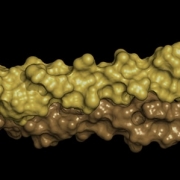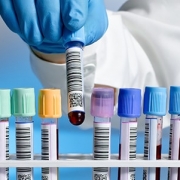Point-of-care testing in genomics
Photo credit: Tommy Trenchard EMLabs
Rapid advances in technology are revolutionising healthcare. How viable is portable DNA testing?
A new publication has shown that mobile phone technology can be used for gene variation analysis and DNA sequencing.1 Is this the first step towards every hospital or GP surgery being able to offer genetic sequencing ‘by the bedside’, asks Fiona MacDonald?
Developments in ‘point of care’ testing
Over recent years, advances in technology have enabled many more tests to be done by the patient’s side rather than in the lab – so called point of care testing (POC). Leaving out the lab has obvious benefits: results are available more quickly, which can mean faster treatment and less cost to the health service. However, in some cases costs can be higher, and training and quality control need to be considered.
Until recently, such testing has primarily been associated with biochemistry – for example, the measurement of glucose, haemoglobin or blood cell counts, or for urinalysis. But diagnostics is expanding rapidly into the field of infectious disease, with devices now being used to identify disease and test viral load and anti-microbial susceptibility. A handheld device for diagnosing infectious diseases such as malaria or HIV may be invaluable in the absence of a pathology laboratory. Is there now a role for POC testing in molecular genetics?
Portable molecular diagnostics
POC testing is in its infancy when it comes to molecular genetics, but has already been advantageous – for example in the detection of targets for therapies and disease monitoring for diseases such as leukaemia. One of the first POC tests in genetics was Cepheid’s GeneXpert, developed to detect the chromosome translocation (BCR-ABL) associated with chronic myeloid leukaemia. The small bench-top device can provide results in less than two hours, with minimal manual labour involved.
A number of companies have developed, or are developing, tests to analyse genetic polymorphisms that influence the effectiveness of drugs. As an example, the Canadian company Spartan has developed a test to analyse CYP2C19, the cytochrome P450 enzyme that activates the antiplatelet inhibitor clopidigrel. Different alleles of the CYP2C19 gene can impair the enzyme’s ability to metabolise the drug, leading to major adverse reactions to its use. Spartan’s one-hour test therefore provides fast direction for clinicians. At the same time, the UK’s QuantumDx is developing a handheld device, due for market in 2018, which can test the polymorphisms associated with response to warfarin in order to guide dosage, and promises results in less than 20 minutes.
The recent study looked at variants in the KRAS gene which have therapeutic implications as they are known to determine response to anti–epidermal growth factor receptor therapies. Two methods were used: targeted sequencing on microscope slides using the RCA method, and in situ point mutation analysis within tumour sections. A mobile phone-based microscope was then used to image the results with a high level of accuracy and sensitivity. Currently, manual steps are still required for these processes, but the research group is interested in developing microfluidics to negate the need for manual input. The study was a proof of concept, but the potential is there to develop this for genomic sequencing.
DNA sequencing on the go?
In instances where specific targets can be analysed and a clinical decision can be made based on a small number of expected results, POC testing can be a practical and invaluable option, saving time and resources and allowing for faster, more accurate patient care. Sequencing a gene, an exome or a whole genome with a view to interrogating it, however, introduces a different level of complexity – not least because data analysis and interpretation of results are time consuming processes that need to be conducted by trained experts. So, is there really a role for handheld sequencing?
Oxford Nanopore has stated that its ultimate goal is to make it possible to sequence ‘anything, anywhere’ – whether in the field or the laboratory. The company’s minION is a handheld device weighing only 90g, which performs nanopore-based sequencing within just a few hours. It has already been used to tackle infectious disease, both in UK hospitals2 and in the field, during the recent Ebola outbreak in West Africa3. The equipment has its limitations: it is not practical to read large genomes, and there is a relatively high error rate reported when compared to existing next generation sequencing platforms. Though new developments are happening all the time, the greatest challenge remains: developing systems that can interpret data for clinical decision-making: it is this careful analysis and interpretation that determines the speed at which meaningful results can be provided, and it is this conundrum that is likely to take some time to solve.
Fiona Macdonald is a consultant clinical scientist based primarily in the West Midlands Regional Genetics Laboratory, and is a fellow of the Royal College of Pathologists. She is an author on more than 80 papers and has also written a variety of book chapters as well as co-authoring two books on the molecular basis of cancer.
References
1 Kühnemund M et al. (2017) Nat Commun, 8:13913.
2 Quick J et al. (2015) Genome Biol, 16: 114
3 Quick et al. (2016) Nature, 530: 228
–









